Review: Treo 700wx

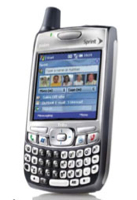
Dieter Bohn gives a full review of Palm's Treo 700wx.
(Originally published at TreoCentral on September 6, 2006)
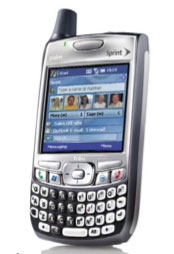
The new Treo 700wx, available now from both Palm and Sprint, is similar in almost every way to the Verizon-exclusive Treo 700w. Running Palm's customized version of Windows Mobile 5 Pocket PC edition, it's an advanced smartphone that will meet nearly every user's needs.
If you're new to Windows Mobile, you absolutely should start with Michael Ducker's excellent 700w review from January 2006. Since the 700wx is mainly an upgrade to the 700w, much of this review will be detailing the differences between the two devices.
Overview
After a heady month of internet rumors, the Treo 700wx has finally hit the store shelves. I've been using it for a week now and I've come away largely impressed. Impressed enough to buy one of my own - I have the early-contract termination fee from Verizon to prove it. Sprint may have lost out on getting the exclusive rights to sell a "Windows Mobile 5 Pocket PC Edition" Treo first -- but they appear to have the last laugh now.
By and large, the 700w fared poorly in comparison to the 700p in the technology-commentariat. I had always thought that it had gotten a bad rap. But at TreoCentral we were generally pretty impressed - the 700w didn't knock it out of the park, but it was a solid double. The real surprise for many of us long-time Treo users was how far along Windows Mobile had come while we ignored it for our user-friendly PalmOS devices.
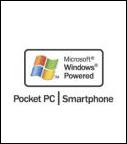
"Windows Mobile 5 Pocket PC Edition" is a mouthful - I'll refer to it as WM5 from here on out. It's important to remember, however, that there's actually a lot of information packed into that mouthful - WM5 is a big step-up from previous iterations of Windows Mobile (and Pocket PC, WinCE, etc.) - and the "Pocket PC Edition" is especially important when considering the 700wx in the context of some of the latest competitors on the market, such as the Motorola Q. The Smartphone Edition of WM5 lacks some key features found on the 700w and 700wx such as a touchscreen and the ability to edit Office docs.
All the latest news, reviews, and guides for Windows and Xbox diehards.
Having already broken myself in on WM5 with the 700w, I found myself eager to see if any of my original issues with the device had been resolved. Back in January, Ducker wrote:
Sure, there are some things that need improvement (more consistent 5-way support, less tapping to accomplish actions, threaded SMS... more on it later), but we have to remember that this is Palm’s first experience with Windows Mobile
Palm has definitely improved one or two things in the 700wx. And one improvement - discussed in the next page - is enough for me to whole-heartedly recommend the phone to the very same people whom I would have previously told to stay away from the 700w: power users. Beyond that, though, Palm kept the 700wx nearly identical to the 700w - a great device with some stuff to quibble about.
Specs and RAM
The "x" in 700wx
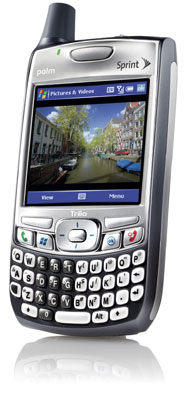
As they've done in the past, Palm has released an updated version of one of their handhelds with an "x" appended to the name. The 'x' here denotes that the 700wx has radically more program memory than the 700w. Before we get to that, though, let's list out the full specifications:
- 128MB (60MB user accessible) non-volatile
- Intel® XScale™ 312MHz processor
- 240 x 240 color TFT touchscreen display
- 16-bit color displays over 65,000 colors
- CDMA2000 EvDO network—compatible with 1xRTT network
800/1900MHz nationwide digital phone - Bluetooth 1.2 wireless support
- Camera: 1.3 megapixels with 1280x1024 resolution
- 2.5mm headset jack is stereo headset compatible
- up to 5 hours talk time and more than 300 hours standby time from the removable battery
- Multi-connector on device
- Dimensions: 2.3" W x 4.4" H (excluding antenna) x 0.9" D
- Weight: 6.4 ounces
If you go to Palm's product page you'll note that these are the fully-accurate specs on both the Treo 700w and the Treo 700wx. What Palm doesn't list is that the 700w has 32 megs of RAM dedicated to running programs, whereas the 700wx has 64. Since WM5 uses up somewhere in the neighborhood of 15 megs of that RAM right off the bat, we're looking at a nearly 3-fold increase in program memory available to all your applications.
The difference in using the 700wx for heavy-duty tasks is simply enormous. In my first look at the 700wx I played a brief video wherein I opened nearly every pre-installed app and it still had more program memory free than the 700w has immediately after a reset.
To be fair, you can actually open every app that comes pre-installed on the 700w and still have a snappy phone. The difference comes when these applications really start to work - when you're browsing the web, editing a large document in Pocket Word, downloading emails in the background, left Pocket Informant open, have a bunch of plug-ins running in your Today screen, and heck, maybe you're running Copilot Live 6 GPS too--for kicks. On the 700w you can do any two or possibly three of those things and experience a small slow-down. On the 700wx you can do them all with nary a lag.
Real world implications of more program memory
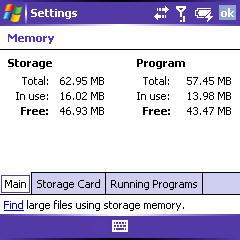
For the average user there really isn't going to be a large difference between the two devices. They both handle email - both push and regular POP or IMAP. They both have high-speed internet access, sync up very well with Outlook, and run the same applications. As long as you periodically remember to quit some applications - or at least don't run anything too intensive, you may never notice the difference.
For the power-user, however, there's simply no comparison. I wrote earlier that I had felt that the 700w got a bad rap -- and I still feel that way. I think it's a great device with great capabilities. It's just that, for me, carrying around a 700wx is the equivalent of carrying around 2 700ws.
I'm writing so much about program memory here partially because it's the most significant new thing to the 700wx, but also because it applies to something that hasn't gotten a lot of attention when it comes to the WM5 Treo: The Zen of Palm.
Having all that extra memory means that you need to spend less time worrying about whether and how the device is working and more time just plain using it. On the PalmOS, you don't worry about quitting programs because they just quit on their own and open up quickly when you want them. On the 700wx, you don't worry about quitting programs because you know that you have enough RAM to run them all anyway.
I should mention that the extra program memory isn't a magic bullet for system stability, however. The 700wx is certainly more stable than the 700w when multitasking, but both still give me the occasional confusing freeze up a couple of times a week.
Hardware
What's in the box?
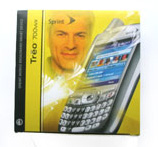
The 700wx comes with the standard Treo accessories - a USB sync cable (which doesn't seem to charge the phone), a power cable, and a pair of hybrid headphones. I'm glad to see that Palm's including hybrid headphones now. I've always been unhappy with the 2.5mm jack on the bottom of the Treo. I had been hoping that with the popularity of bluetooth headsets they might consider just moving it up to the standard 3.5mm headphone jack.
The 700wx also comes with a manual and a software CD with Active Sync and various other little extra pieces of software (a puzzle game called "Cubis" is on it and I'm addicted). Later in the article you'll see some "opening the box" photos.
Overall feel of the 700wx
I put off the hardware section of this review a little later than usual because there's not much new here. The Treo 700wx maintains the same tried-and-true shape of Treos since the Treo 600. Like the other Treos in the 700 series, it has a slightly squarer feel than previous Treos.
The Sprint version of the Treo 650 was blue. I'm happy to say that this Treo is a much more professional grey tone - though actually with a hint of blue to it. We'll call it gunmetal, just slightly darker than its 700 series cousins. It's easily the most professional-feeling and looking Treo I've ever owned (and I've owned nearly all of them).
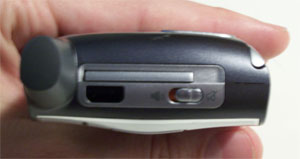
The only other difference is that there is a tiny foam pad on the inside of the battery cover - which makes the 700wx feel more solid - it passes the "creak test" with flying colors. Palm has really come a long-way in terms of build-quality since their early days. The buttons all have a great feel to them. The ringer switch even feels better than on previous Treos - Palm has added a little orange paint beneath the switch so you can more easily see whether it's on vibrate-mode or not (alas, neither the 700w or 700wx have the 700p's little vibration reminder when you move the switch).
The keyboard is very easy to type on. Again, Palm has done a good job hanging on to what's important (Handspring's much-touted "oval-domed keys") while evolving the design to look more professional (squaring up the keys and allowing the entire keyboard to angle up instead of go straight across at the top).
Screen and backlight
The 700wx maintains the 240x240 resolution screen. There are times when this relatively lower-resolution doesn't bother me at all. But when I'm browsing the web the lack of screen space does sometimes become noticeable. However, there is no "grid" between the pixels - the screen is very sharp. It also looks fine in sunlight, definitely on par with other modern color screens. The backlight on the screen is pretty-much what you'd expect: bright and crisp if you set the brightness very high, slightly dull if you set it low. I just leave it in the middle.
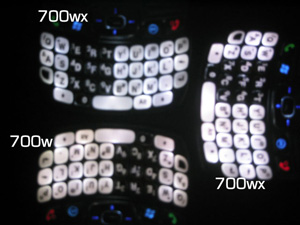
What's interesting to note about the backlight is how there seem to be subtle color differences from Treo to Treo, especially on the keyboard. When reading the boards I'm seeing a wide array of opinions on all the 700 series Treos - people will say that it's too blue, too purple, too yellow. I'm sure that part of that is just differing perception of color. Yet it does seem odd that there doesn't seem to be much consistency.
In the photo here you're looking at a Treo 700w and then two 700wx Treos - all ostensibly with nearly identical hardware. Though it's likely difficult to tell from the photo, the widest variation between keyboard brightness and color is between the two new 700wx Treos. Odd. Anyway, you can probably tell I'm quibbling here. The screen, keyboard, and backlight are all great on all three Treos - assuming you're happy with 240x240 resolution. Most of the time, I am.
Phone and Data
Fast data? Check.
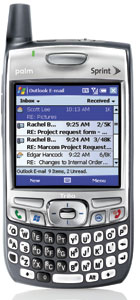
Like its Treo 700-series cousins, the 700wx sports EVDO. EVDO gives the Treo nearly-broadband-like speeds. With a good signal I averaged about 450 kbits/second in my tests. Heck, with a poor signal I still managed around 350-400 kbits/second. That's roughly half of your average cable-modem speed and 2/3s the speed of your average DSL line.
Compared to the older 1xRTT data networks available on Sprint and Verizon (which you can still fall back to if you don't have EVDO in your area), it's a 300% increase in speed.
Of course, raw bandwidth is only half of the story. The other half is how quickly your web browser can actually render the pages you're downloading. Pocket Internet Explorer on my 700wx loaded up TreoCentral's (table-heavy) homepage in about 10 seconds - 3 seconds faster than the 700w.
Dial-up networking? Check.
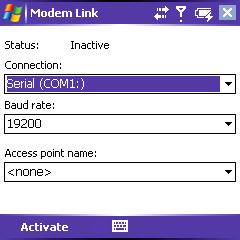
As gratifying as it is to have high-speed data on my phone, it's even more gratifying to have it available for my laptop when I'm away from a WiFi signal. The 700wx has an application called "Modem Link" pre-installed. Modem Link lets you attach your 700wx to your Windows laptop with the included USB cable.
You'll need to download and install the "Sprint Connection Manager" to your desktop, which is a mixed blessing. On the one hand, you have to have the presence of mind to load up the software CD in a spot where you have an internet connection so you can properly download Sprint's desktop client. On the other hand, the desktop client works seamlessly and handles all of the network configuration for you.
Verizon has promised this capability for the 700w but has not, so far as I have been able to gather, delivered. In the meantime, PDANet is a good solution for 700w DUN.
Tethering is USB-only, unfortunately.
Phone quality - staying the course
Phone reception wasn't an issue, which is to say I don't notice it being particularly stronger or weaker than other phones. Phone calls on the 700wx were, to my ears, identical to those on the 700w. Both are better than the Treo 650, especially in terms of call volume.
Of course, the 700wx has the neat photo-speed dial buttons and the VCR-like controls for your voicemail. You can assign speed-dials to buttons on the keyboard and type-to-find your contacts as well. Finally, because it uses EVDO, if you are called while using data the ring will come through. You cannot do both voice and EVDO data simultaneously, however.
Unfortunately, the 700wx still uses Bluetooth 1.2 - which means certain advanced bluetooth features are not supported. I generally find that the range of bluetooth headsets paired with Treos is slightly worse than average and the 700wx is not an exception. It works, but it won't blow your mind. If you're planning on using bluetooth, get the best headset you can. (Mine's currently the Sony Ericsson HBH-IV835 and it works very well).
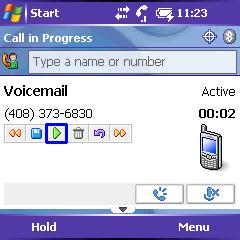
One nice update is that the 700wx now has soft-buttons on the call-screen for both speakerphone and mute. On the 700w you need to hit the menu button first, then scroll down to the option you'd like. The new buttons really only save one or two button presses - but psychologically it makes a big difference for me. That may be because I'm used to those big thumb-buttons on the PalmOS calling screen.
The 700wx's buttons are not big thumb buttons, however, so you'll likely be using the 5-way to access them. Fortunately, the 5-way focuses on them by default. If you want to toggle bluetooth you'll have to do it the old-fashioned-menu-way. I can't explain why they'd add these two buttons but not the bluetooth. I much prefer the PalmOS way - the speakerphone button switched automatically to a bluetooth toggle when it detects a headset. Still, though, nice touch.
Included Applications
Fast data? Check.

Like its Treo 700-series cousins, the 700wx sports EVDO. EVDO gives the Treo nearly-broadband-like speeds. With a good signal I averaged about 450 kbits/second in my tests. Heck, with a poor signal I still managed around 350-400 kbits/second. That's roughly half of your average cable-modem speed and 2/3s the speed of your average DSL line.
Compared to the older 1xRTT data networks available on Sprint and Verizon (which you can still fall back to if you don't have EVDO in your area), it's a 300% increase in speed.
Of course, raw bandwidth is only half of the story. The other half is how quickly your web browser can actually render the pages you're downloading. Pocket Internet Explorer on my 700wx loaded up TreoCentral's (table-heavy) homepage in about 10 seconds - 3 seconds faster than the 700w.
Dial-up networking? Check.

As gratifying as it is to have high-speed data on my phone, it's even more gratifying to have it available for my laptop when I'm away from a WiFi signal. The 700wx has an application called "Modem Link" pre-installed. Modem Link lets you attach your 700wx to your Windows laptop with the included USB cable.
You'll need to download and install the "Sprint Connection Manager" to your desktop, which is a mixed blessing. On the one hand, you have to have the presence of mind to load up the software CD in a spot where you have an internet connection so you can properly download Sprint's desktop client. On the other hand, the desktop client works seamlessly and handles all of the network configuration for you.
Verizon has promised this capability for the 700w but has not, so far as I have been able to gather, delivered. In the meantime, PDANet is a good solution for 700w DUN.
Tethering is USB-only, unfortunately.
Phone quality - staying the course
Phone reception wasn't an issue, which is to say I don't notice it being particularly stronger or weaker than other phones. Phone calls on the 700wx were, to my ears, identical to those on the 700w. Both are better than the Treo 650, especially in terms of call volume.
Of course, the 700wx has the neat photo-speed dial buttons and the VCR-like controls for your voicemail. You can assign speed-dials to buttons on the keyboard and type-to-find your contacts as well. Finally, because it uses EVDO, if you are called while using data the ring will come through. You cannot do both voice and EVDO data simultaneously, however.
Unfortunately, the 700wx still uses Bluetooth 1.2 - which means certain advanced bluetooth features are not supported. I generally find that the range of bluetooth headsets paired with Treos is slightly worse than average and the 700wx is not an exception. It works, but it won't blow your mind. If you're planning on using bluetooth, get the best headset you can. (Mine's currently the Sony Ericsson HBH-IV835 and it works very well).

One nice update is that the 700wx now has soft-buttons on the call-screen for both speakerphone and mute. On the 700w you need to hit the menu button first, then scroll down to the option you'd like. The new buttons really only save one or two button presses - but psychologically it makes a big difference for me. That may be because I'm used to those big thumb-buttons on the PalmOS calling screen.
The 700wx's buttons are not big thumb buttons, however, so you'll likely be using the 5-way to access them. Fortunately, the 5-way focuses on them by default. If you want to toggle bluetooth you'll have to do it the old-fashioned-menu-way. I can't explain why they'd add these two buttons but not the bluetooth. I much prefer the PalmOS way - the speakerphone button switched automatically to a bluetooth toggle when it detects a headset. Still, though, nice touch.
Assorted Bits
There's a few things that need mentioning that don't really fit in the previous pages.

Searching There are now two web-search options on the today screen. The new default is a Windows Live search (which is queried by a Sprint server, for whatever that's worth). You can set it back to the Google search if you like - the option is in a tab under the today screen's preferences. I would have expected the search option to be under the option button for the search plug-in.
In any case, the Windows Live search is actually really nice. Unlike the Google search, the search results page gives you links to both the full version and a stripped-down mobile version of each hit. With the Google engine you go to the mobile version and then scroll down on the actual page to a link to the full version.
Assorted Bits
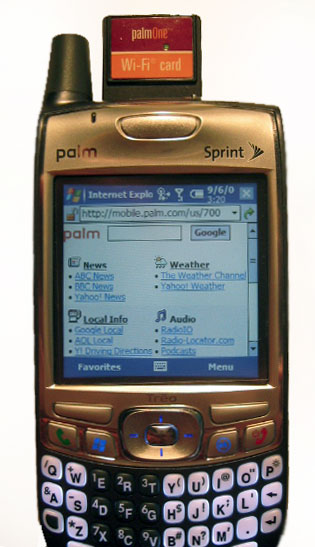
Voice Command works great (especially with the extra program memory!). Unfortunately, it doesn't work over bluetooth. Turns out this is actually a limitation of WM5, as explained here.
No WiFi. I have to mention that - it's practically archaic that a device this advanced doesn't have WiFi built in. At least the drivers for Palm's WiFi card are built-in and the card works great. In point of fact, you can surf via WiFi while on a call! I suppose that this would theoretically mean you could talk over Skype and the actual phone at the same time.
Battery life seems to be on par with the 700w - it easily gets me through a full day of moderate to heavy data usage and an hour or so of calls. You'll still be happier with an extended life battery. Another similarity: I can't see any appreciable difference in the camera quality between the 700w and the 700wx.
I can't resist posting the "opening the box" photos, either.
align="center">
| Row 0 - Cell 0 | Row 0 - Cell 1 |
| Row 1 - Cell 0 | Row 1 - Cell 1 |
Conclusion
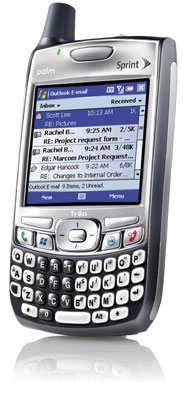
The Treo 700wx will cost you $499.99 with a 2-year service plan, $649.99 without, so it's certainly far from cheap. Sprint's unlimited data plan is, though, at just $15 per month. It's available now.
I am going to wrap up this review with a quote about the 700w from Ducker's review that I think applies perfectly to the 700wx: "The Treo 700w is an excellent Windows Mobile device, likely the best that has ever been produced." That title now belongs to the Treo 700wx.
When a device gets this close to seeming like it's practically perfect you tend to focus on the little things that it misses at the expense of everything that it gets right. The Treo 700wx is this close. Although this review may contain quite a few little gripes, they're little. This is by far the best Treo I've ever owned and probably the best Treo Palm has produced to date.
The burning question, I suppose, is whether it's the best smartphone currently on the market. Not to put too fine a point on it: is it better than the 700p? Here's my take: the 700wx is more powerful and has more functionality but WM5 is still less intuitive and easy-to-use then the 700p's PalmOS. Nevertheless, for me, the 700wx is better.
| Ratings (out of 5)Features: 5Usability: 4Setup: 5Cost/Benefit: 4Overall: 5 | ProsCons |
(First posted at TreoCentral on September 6, 2006)

Home to the most invested and passionate Microsoft fans, Windows Central is the next generation destination for news, reviews, advice and buying recommendations on the Windows, PC and Xbox ecosystems, following all products, apps, software, AI advancements, and accessories. We've been around for more than decade, and we take our jobs seriously. Windows Central writers and editors value accuracy and editorial independence in everything we do, never receiving compensation for coverage and never pulling punches.
